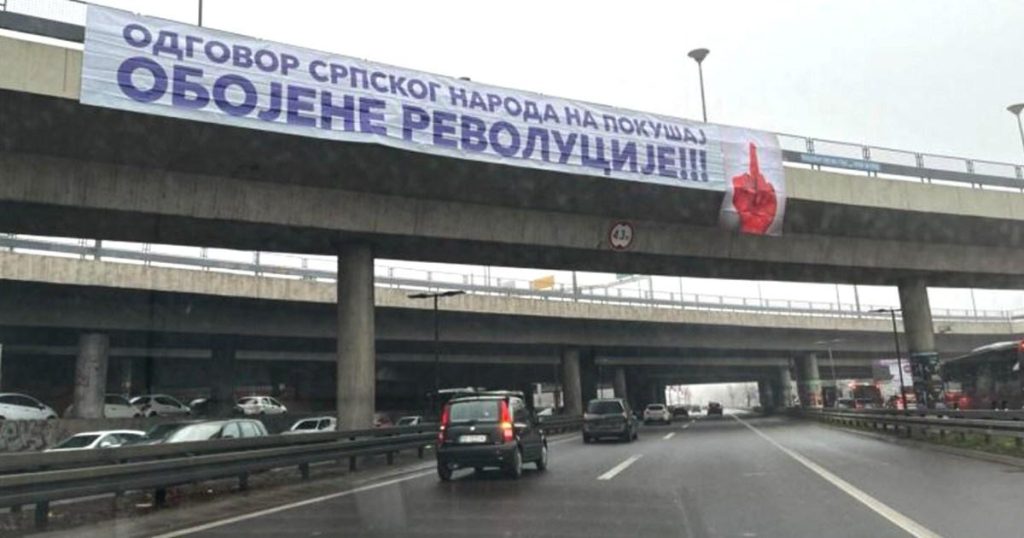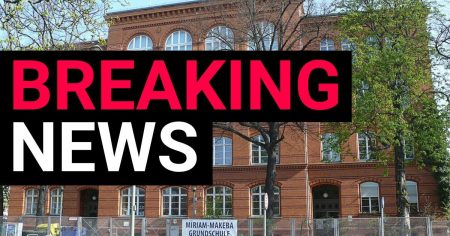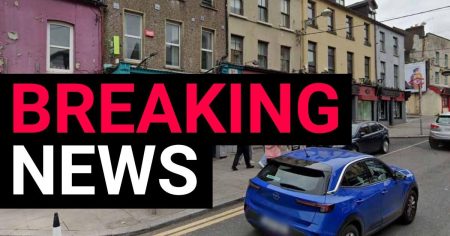The Bloody Finger: A Symbol of Defiance and Repression in Serbia’s Political Turmoil
Belgrade, the capital of Serbia, has become a canvas for a stark and unsettling display of political messaging. Towering banners depicting a blood-soaked hand giving the middle finger have appeared across the city, accompanied by the slogan, "The Serbian people’s response to colour revolution attempt." This provocative imagery has inflamed an already tense political climate, exacerbating the divide between the government and a swelling protest movement. The banners are widely perceived as a government-sponsored response to ongoing demonstrations triggered by a tragic infrastructure collapse that claimed fifteen lives. This symbolic act of defiance has further fueled public anger and raised concerns about escalating authoritarian tendencies within the Serbian government.
The catalyst for these protests was the catastrophic collapse of a concrete canopy at a railway station in Novi Sad, resulting in fifteen fatalities. Public outcry swiftly followed the incident, with many attributing the tragedy to shoddy construction practices and endemic corruption, particularly implicating government contracts with Chinese state-owned companies involved in the station’s renovation. The phrase "your hands are bloody" became a rallying cry for protesters, accusing authorities of culpability in the deaths. The appearance of the bloodstained middle finger banners is seen as a direct and contemptuous response to this accusation, escalating tensions rather than addressing the underlying concerns fueling the protests.
The demonstrations, initially sparked by the Novi Sad tragedy, have broadened into a wider expression of discontent with the leadership of President Aleksandar Vucic. Accusations of authoritarianism, corruption, and suppression of dissent have plagued Vucic’s tenure, and the protests represent a significant challenge to his authority. The government’s response, exemplified by the provocative banners, appears to confirm the protesters’ concerns about a dismissive and heavy-handed approach to public criticism. The banners, viewed by many as a blatant display of state-sponsored intimidation, serve to further polarize the political landscape and deepen the distrust between the government and its citizens.
The symbolic gesture of the bloody middle finger takes on multiple layers of meaning within the context of the ongoing political turmoil. For the government and its supporters, it represents a defiant rejection of the protesters’ accusations, framing them as a foreign-backed attempt to destabilize the country through a "colour revolution". This narrative serves to discredit the legitimacy of the protests and justify a more forceful response. For the protesters, however, the image embodies the government’s callous disregard for human life and democratic principles. The bloodstained hand symbolizes the tragic consequences of corruption and negligence, while the middle finger conveys the government’s contempt for public accountability.
The provocative banners have drawn widespread condemnation from opposition figures and human rights organizations. Mila Popović, a member of the National Assembly, described the banners as "fascism in its most naked form," highlighting the government’s reliance on "repression, fear, and the ruthless trampling of citizens to maintain power." This strong condemnation reflects growing concerns about the erosion of democratic values and the increasing use of intimidation tactics to silence dissent. The government’s response to the protests, rather than engaging in constructive dialogue, appears geared towards suppressing criticism and maintaining control through fear.
While Serbian prosecutors have filed charges against thirteen individuals in connection with the Novi Sad canopy collapse, including a government minister and several state officials, this action has done little to appease the protesters. The charges are perceived by many as a superficial attempt to address public outrage without addressing the systemic issues of corruption and lack of accountability that lie at the heart of the crisis. The government’s focus on framing the protests as a foreign-backed conspiracy further undermines the credibility of these legal actions and reinforces the perception of a regime unwilling to engage in genuine self-reflection and reform. The ongoing protests and the government’s inflammatory response highlight the deep fissures within Serbian society and the urgent need for meaningful dialogue and accountability to address the underlying causes of political unrest. The bloody finger banners, rather than silencing dissent, have become a potent symbol of the ongoing struggle for transparency, accountability, and democratic reform in Serbia.











